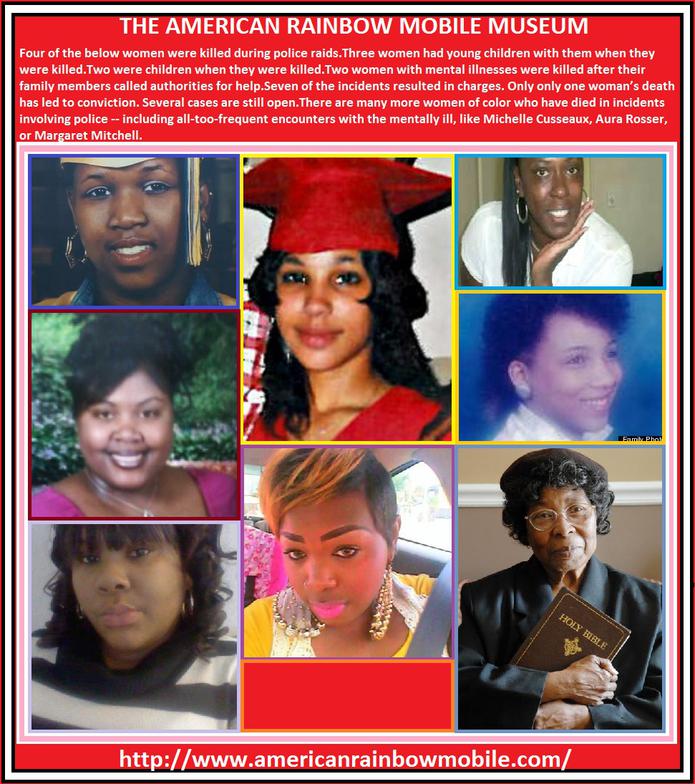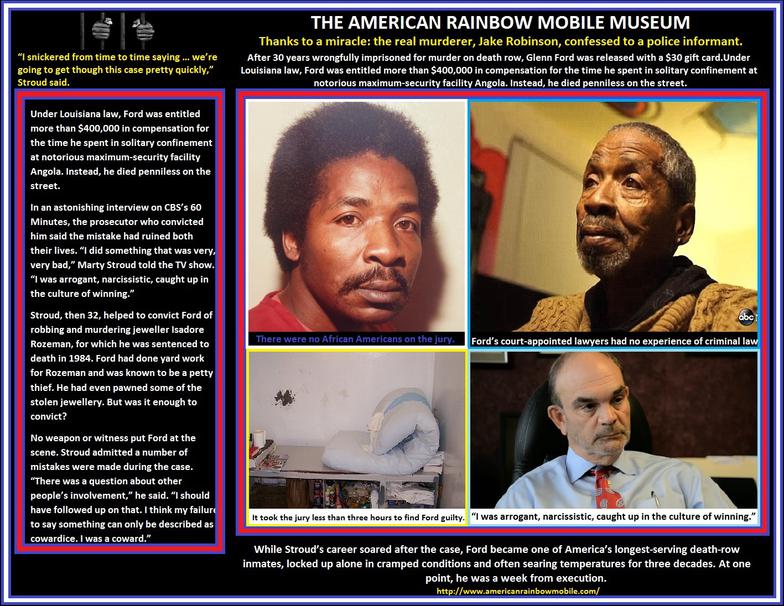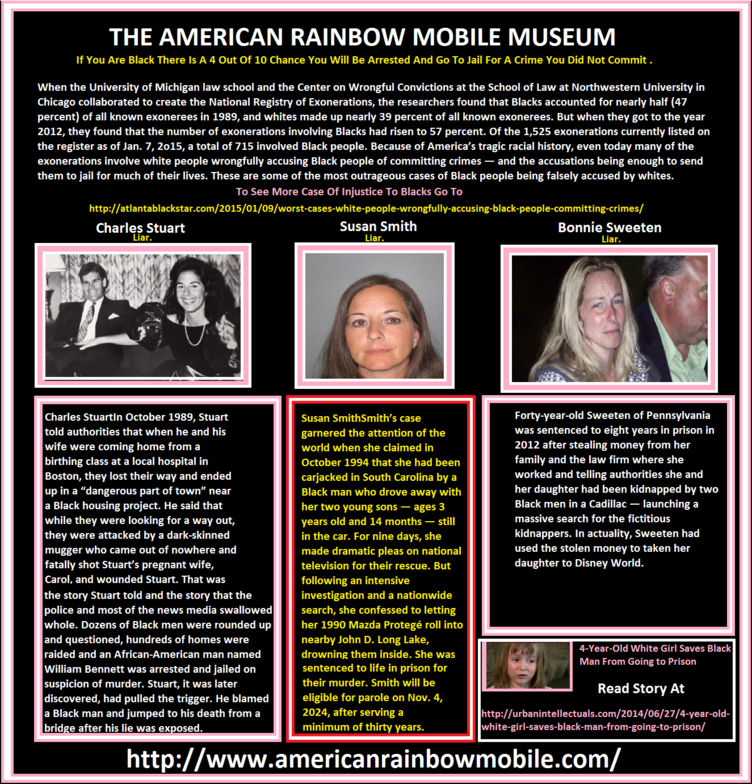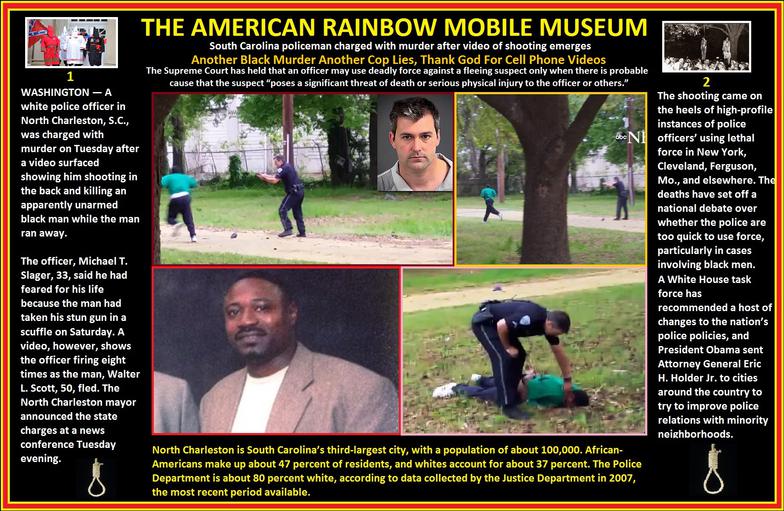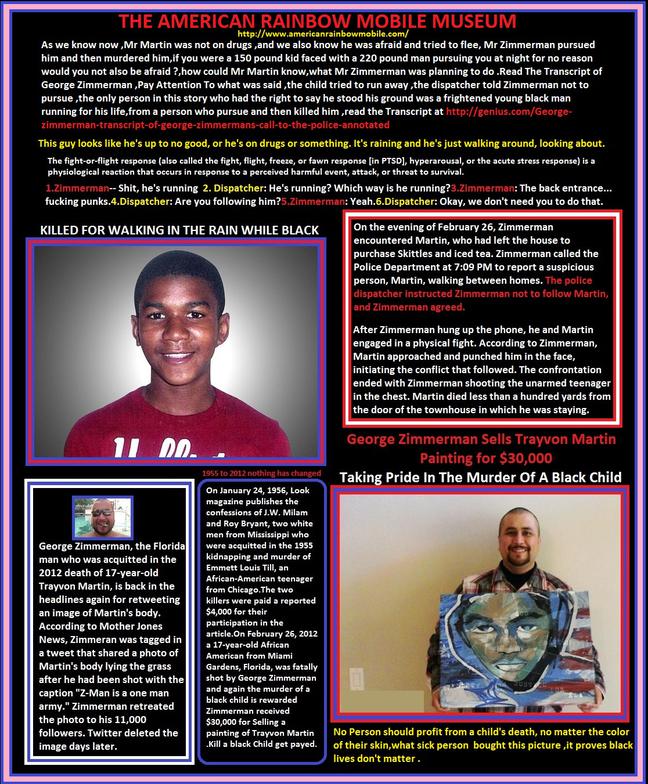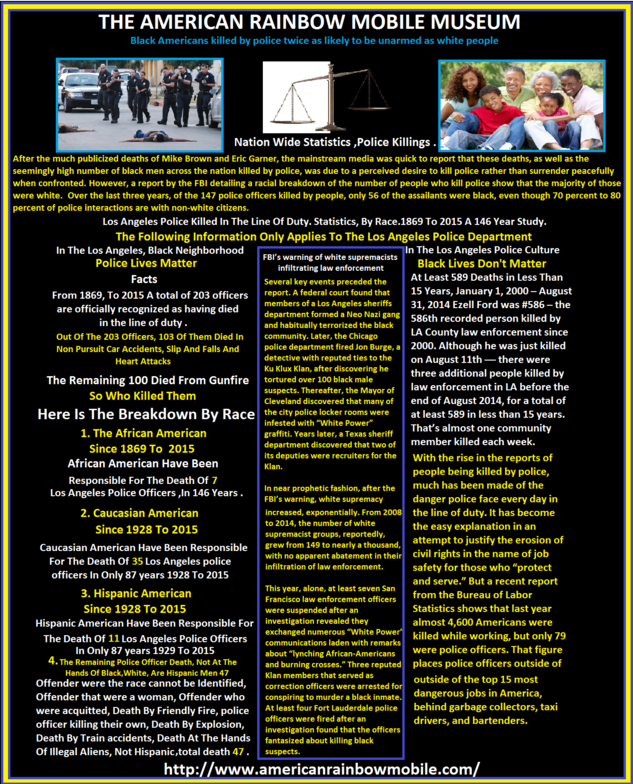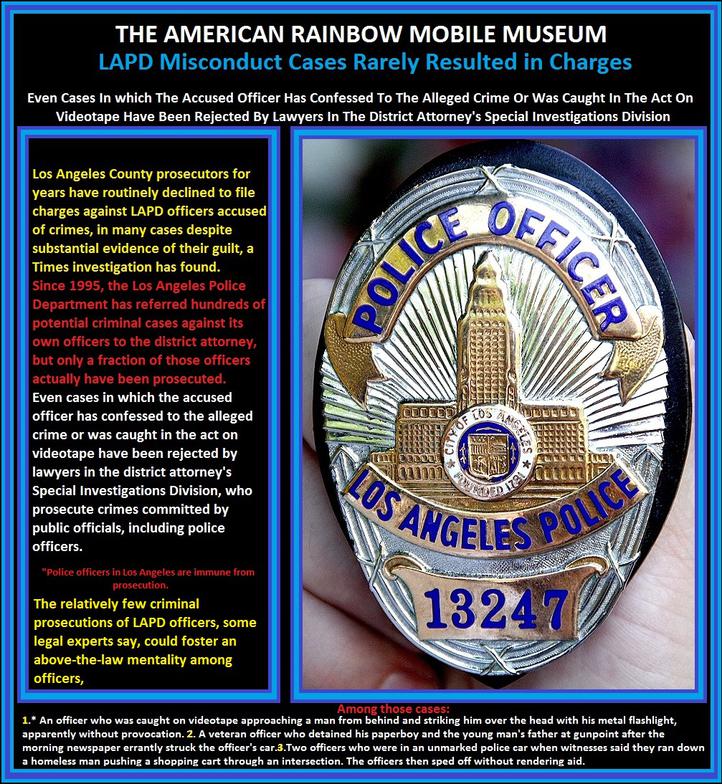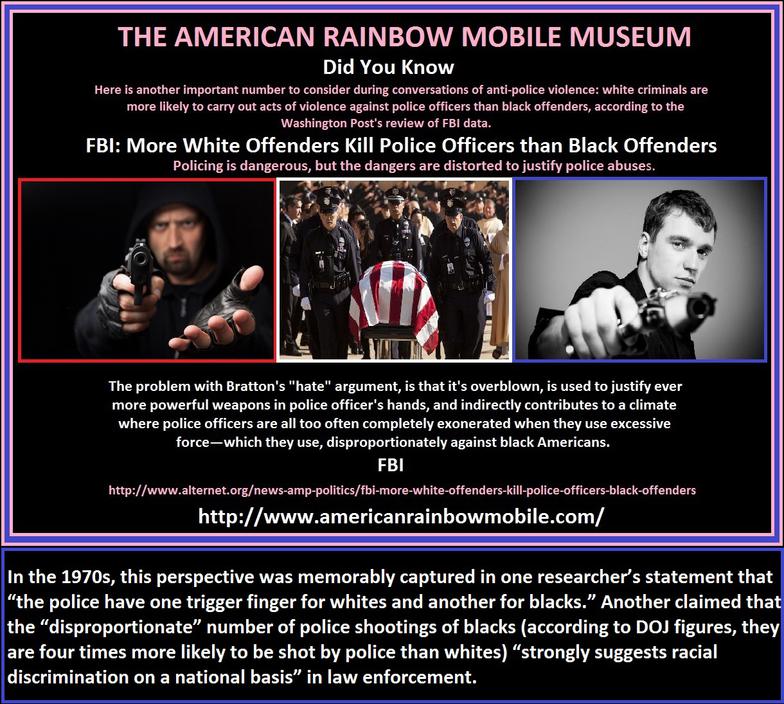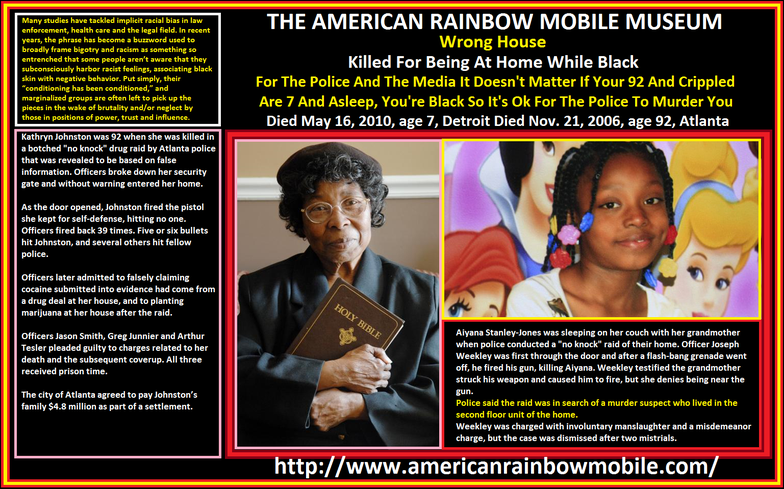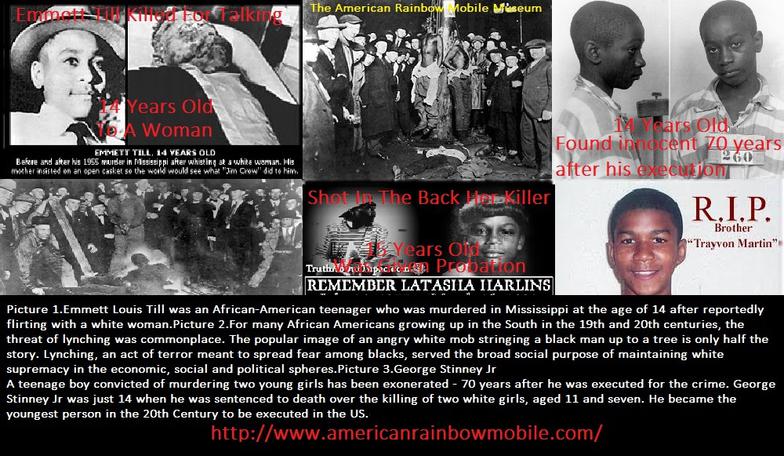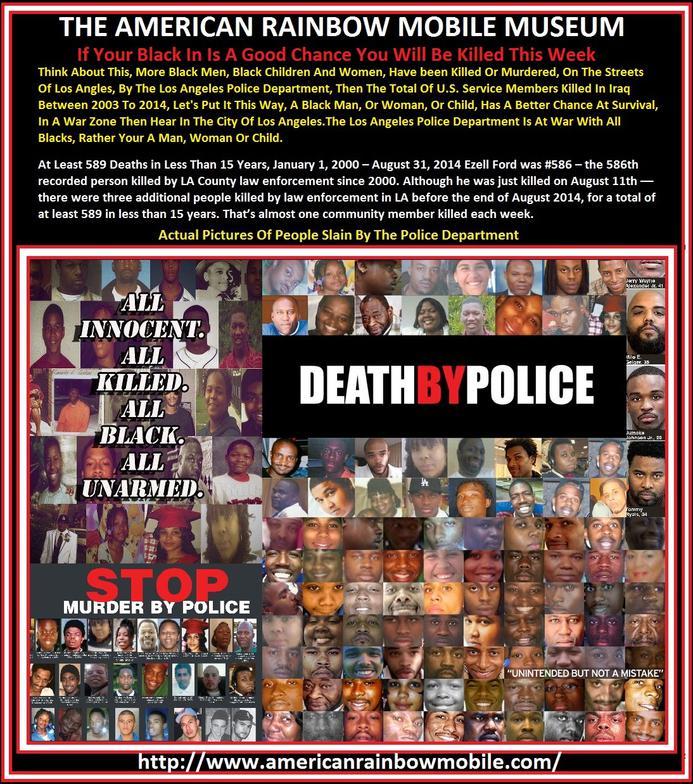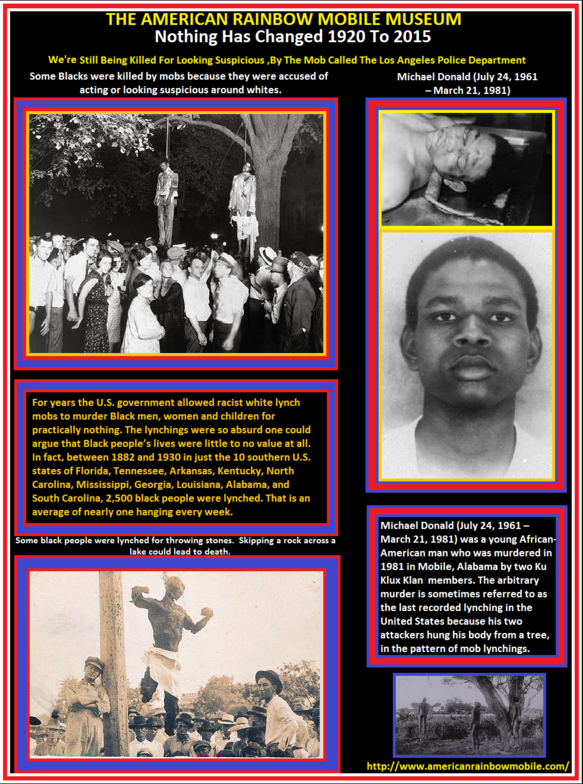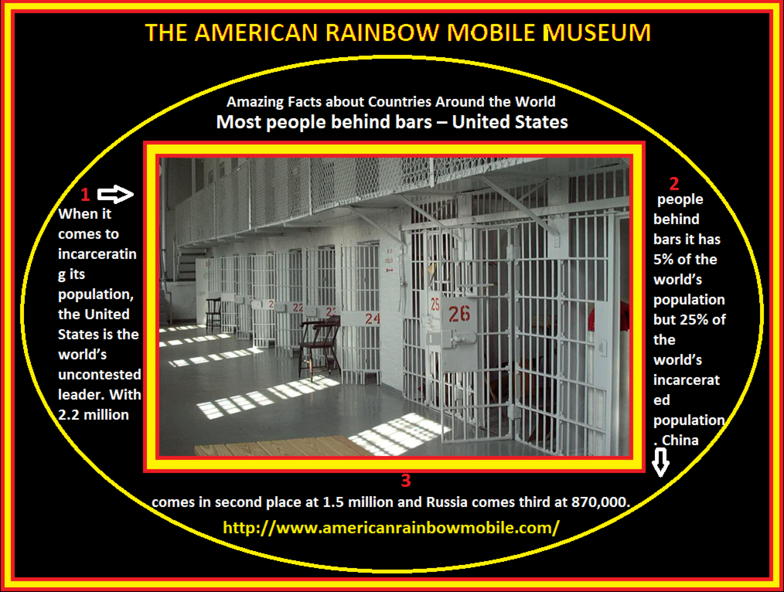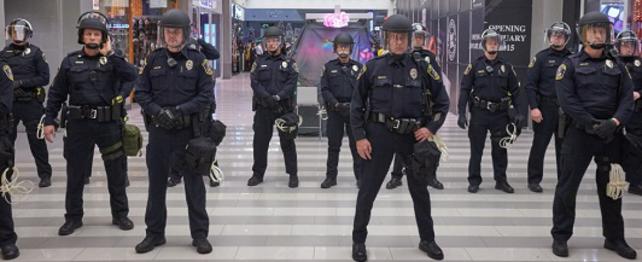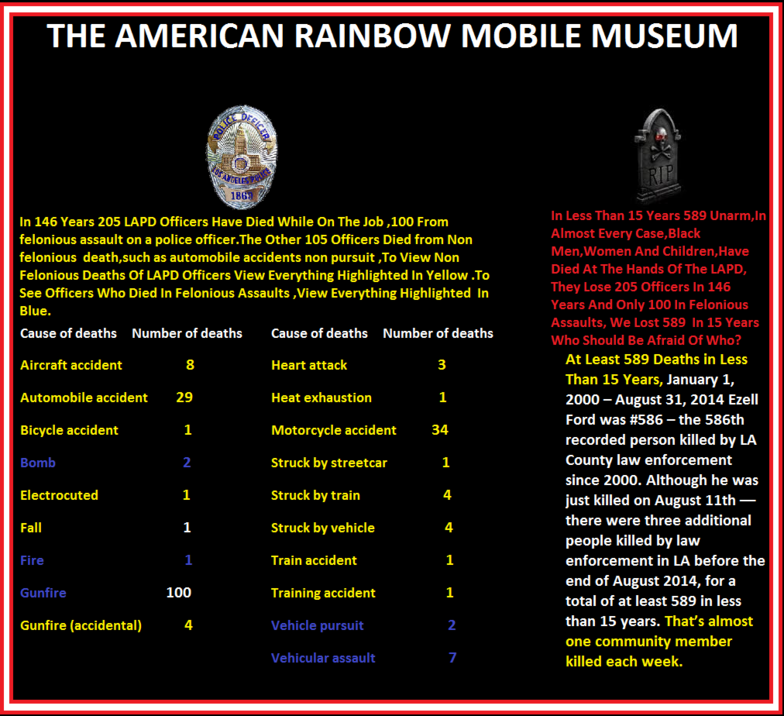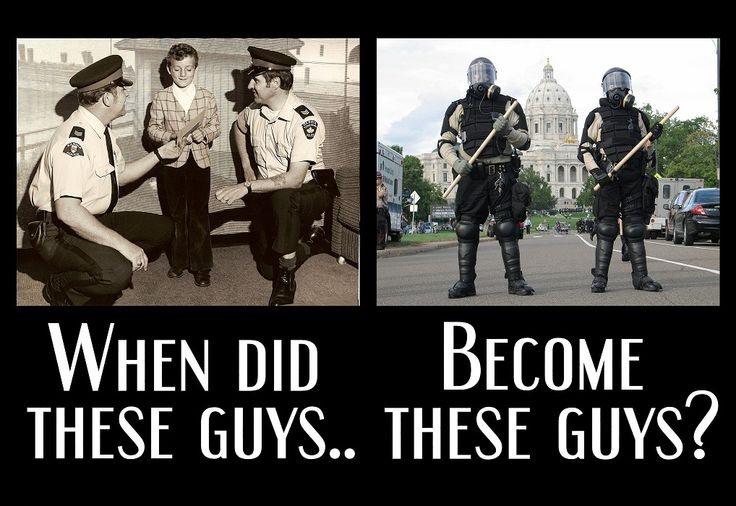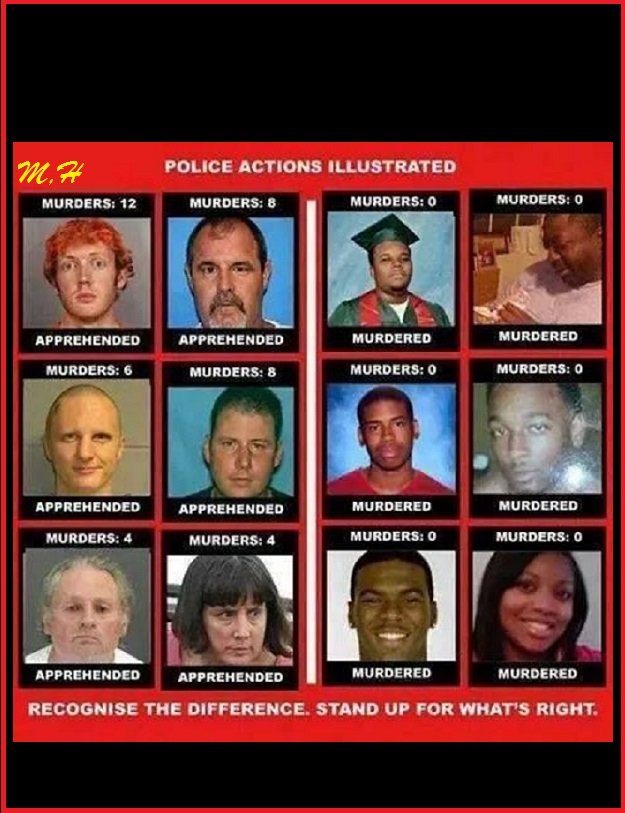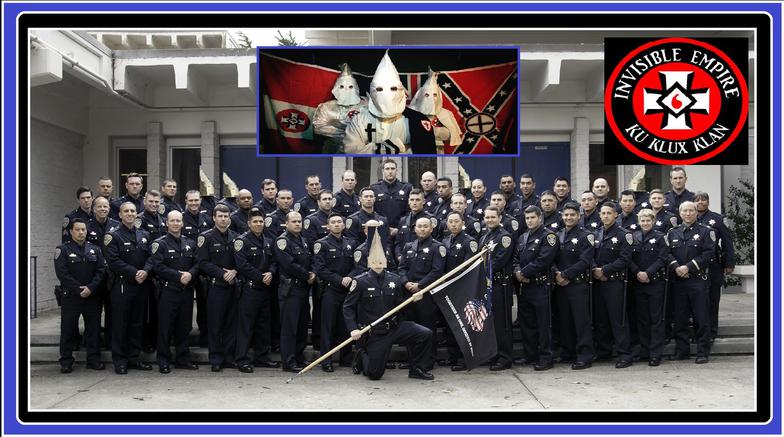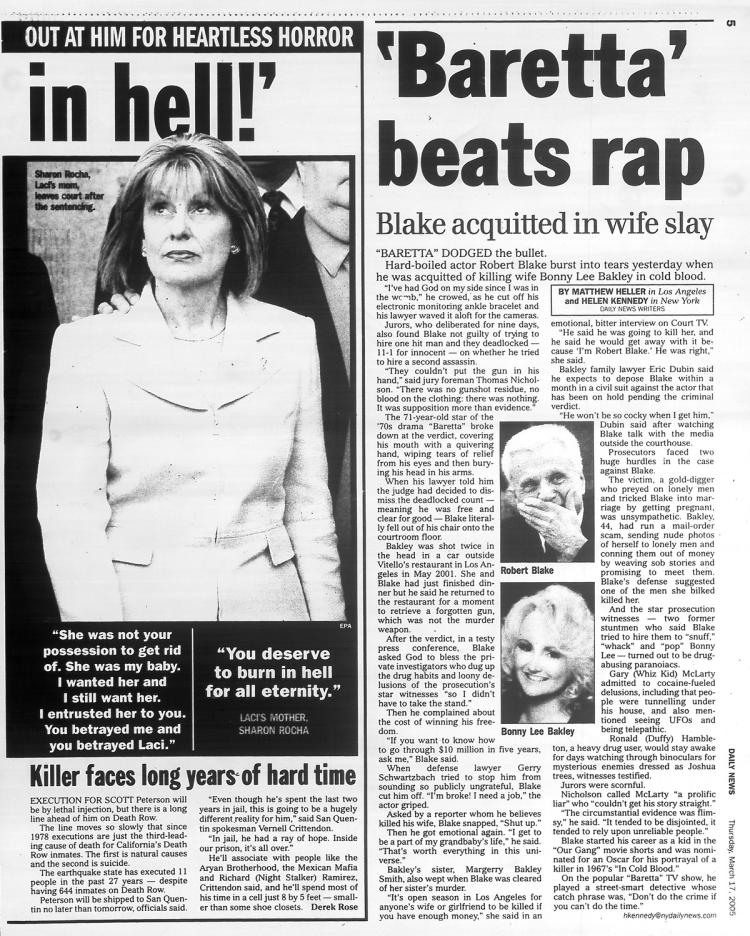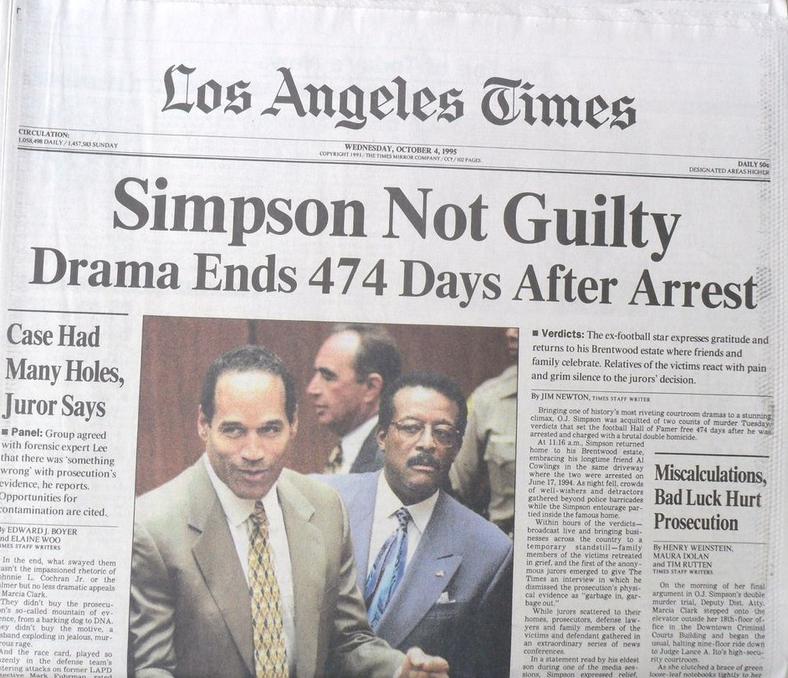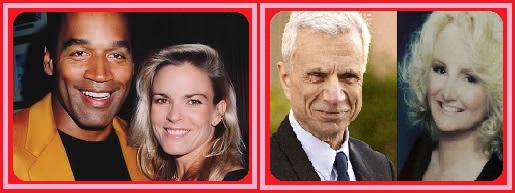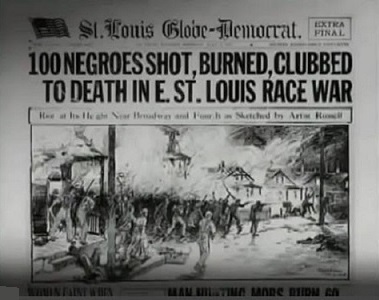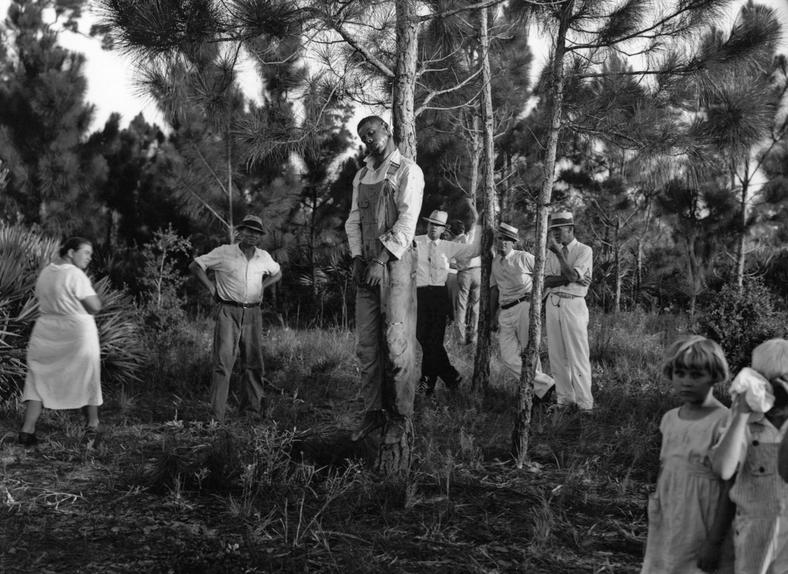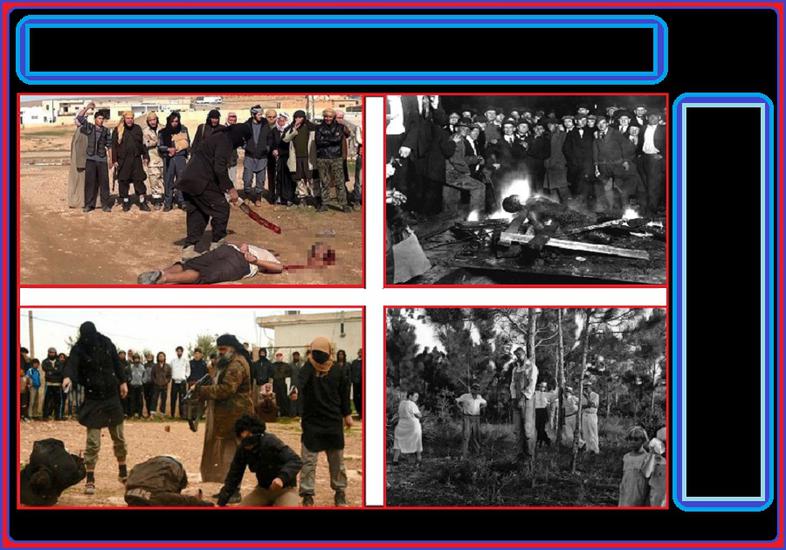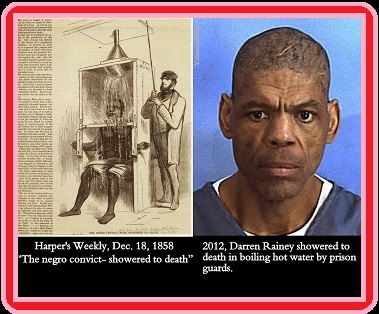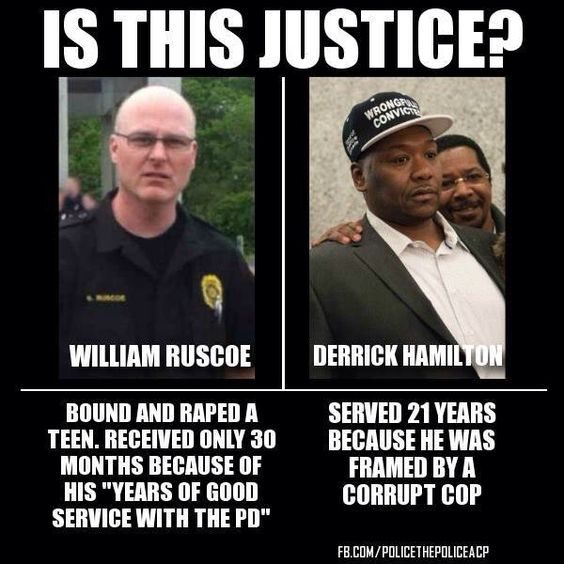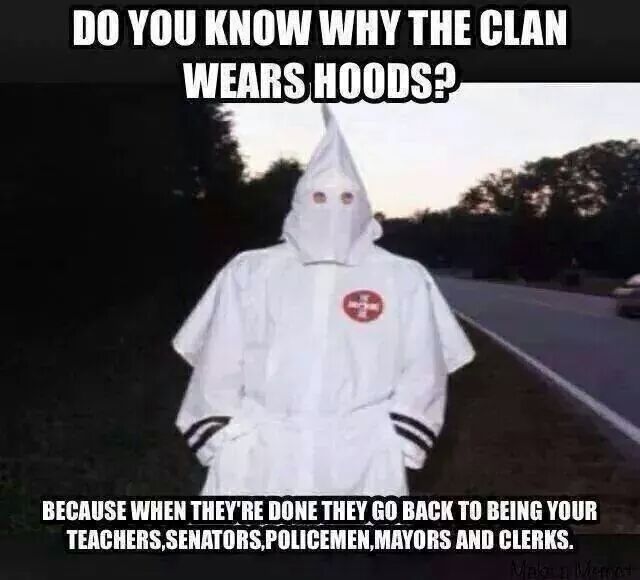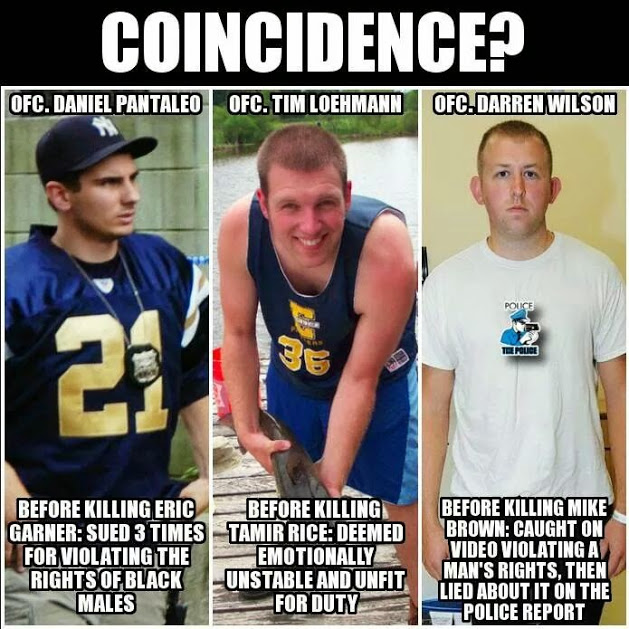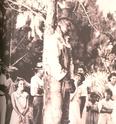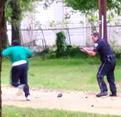Donate
Donate
Donate
Donate
I Believe That Every Single One Of Us,Has A Responsibility To Get Involved In Trying To Make A Difference In The World. Our Generation Faces Many Challenges, Some Of Which Were Passed On To Us By The Past Generations, But It's Up To Us To Find Solutions Today So That We Don't Keep Passing Our Problems On.Each One Of Us Can Make A Difference. Together We Make Change.
African American Refugee Immured American Genocide Mr.H לוחם של אלוהים
אלוהים אנא שמור על
עמך עתיק
Donate
Design and written by
Mr Michael L Hubbard
1.We are requested a centralized and federally operated up-to-date police misconduct tracking systems 2.Teaching the truth about America's History (Not His-Story) and the true treatment of people of color in America's History 3. Giving psychological aid to people of color who are suffering from Post-Traumatic Stress Disorder,because of their treatment by law enforcement and media coverage 4. Restoring voting rights to people of color who were targeted by the so called war on drugs,that has directly affected the voting power of the Afro-American 5. Requesting that we are allow to appear before the United Nations and International Court of Justice,at The Hague 6.We are asking that you sign a petition asking for relief from the United Nations ,for the relentless and unyielding genocide actions against the Afro-Americans and other people of color by the United States Government 7. Reforming the Laws that are designed to incarcerate people of color 8.We need a national dialog about amending the 13th Amendment. Current implications of the punishment clause 9. We need a Government investigation on why Police arrest black Americans for drug crimes at twice the rate of whites, according to federal data, despite the fact that whites use drugs at comparable rates and sell drugs at even higher rates 10.
PART OF THE AMERICAN RAINBOW MOBILE MUSEUM FAMILY
Donate
Donate
Donate
Donate
Donate
Donate
Donate
Donate
Donate
Donate
Donate
Donate
Donate
Donate
Donate
Double click here to add text.
 | ||||
Avg. Annual Rate per 50 K officers 5-Year Total
5-Year Total 2012 Deaths
2012 Deaths 2011 Deaths
2011 Deaths 2010 Deaths
2010 Deaths 2009 Deaths
2009 Deaths 2008 Deaths
2008 Deaths
South Dakota11.5
Montana 10.8
Alabama 8.5
Mississippi 8.2
North Dakota 7.3
Oklahoma 7.2
Georgia 6.8
Arkansas 6.8
Louisiana 6.7
Maine 6.2 Numbers listed are for combined state and local law enforcement and corrections officers. There are less than 5,000 police and corrections employees working statewide in South Dakota, Montana, North Dakota and Maine, so relatively few deaths in these states can have a significant effect on per capita rates.
6.2 Numbers listed are for combined state and local law enforcement and corrections officers. There are less than 5,000 police and corrections employees working statewide in South Dakota, Montana, North Dakota and Maine, so relatively few deaths in these states can have a significant effect on per capita rates.
 | ||||
 | ||||||
Most of you have no doubt been subjected in the last few days to friends droning on about the supposed "dangers" of policing. That we have to understand that the officer may have thought he was in danger when he executed a unarmed man, woman are child of color . Well here is a controversial statement: I don't care how dangerous your job is. It was the trade-off you willingly entered into when you were given a lethal weapon to use at your discretion and the power to assert complete authority over a citizen at your will. In 2009, the Census of Fatal Occupational Industries compiled a list of the most dangerous jobs in the country. Numbers are deaths/100,000.
Fishermen: 128.9
Logging workers: 116.7
Aircraft pilots: 72.4
Iron and steelworkers: 46.4
Farmers and ranchers: 39.5
Garbage collectors: 36.8
Roofers: 34.4
Electrical power line installation/repair: 29.8
Truck drivers: 22.8
Oil and gas extraction: 21.9
Taxi drivers: 19.3
Drinking establishment employees: 17.0
Construction workers: 16.0
Police and deputies: 15.6
 | ||||||
The hero cop narrative is also belied by the facts. According to the United States Bureau of Labor Statistics, police work does not crack the top-10 list of most dangerous jobs. Loggers have a fatality rate 11 times higher than cops, and sanitation workers die in the line of duty at twice the rate that police do. Yes, police officers are sometimes shot and killed, but this is a fairly rare phenomenon. Indeed, according to the National Law Enforcement Officers Memorial Fund, of the 100 officers killed in the United States in the line of duty in 2013, far more crashed their cars or were hit by cars than were shot or stabbed. In fact, if you compare the murder rate among police officers with the murder rate in several American cities, you find that it is far safer to be a LAPD or NYPD officer than an average Black or Native American man on the streets of America .
Moreover, we pay our police officers handsomely in New York City. It costs taxpayers more than $8.5 billion a year to pay for the NYPD, and between salary, overtime, and the value of their benefits, the average beat cop costs the taxpayers more than $150,000 per year. That is not an argument for paying police officers less, just that we already pay these civil servants a lot more money than most people realize to do a job that is a lot less dangerous than most people imagine.
We should appreciate the value and sacrifice of those who choose to serve and protect. But that appreciation should not constitute a get-out-of-jail-free card for the vast army of 800,000 people granted general arrest powers and increasingly armed with automatic weapons and armored vehicles.
There are real-world harms that follow from the myths perpetuated by police unions. Arguments about the dangerous nature of police work drive the increasing militarization of police departments. The life-and-death nature of the job is used to push for extremely generous medical leave, overtime, and pay packages. Most insidious of all, the exaggerated danger and trumped-up heroism drives an us-versus-them mentality that suffuses contemporary big-city policing and bleeds into the criminal justice system, causing systemic imbalances that chronically favor the police over citizens.
 | ||||||
If you Dress Up A Man To Look Like A Cowboy,You put him on a Horse ,You Give Him A Cowboy Hat ,Boots And Spears ,And Put A Gun Belt On Him ,He Will Begin To Think Of Himself As A Cowboy .
If You Give The Police Military Gear ,And Dress Them Up To Look Like A Soldier He Will Begin To See Himself As A Soldier And The Citizens He Is Suppose To Protect As The Enemy .
Police Have Killed at Least 1,083 Americans Since Michael Brown's Death
By the numbers: US police kill more in days than other countries do in years
Stop resisting ,is all a racist cop has to yell in order to beat or kill a black man !black men in America are in more danger than they can possibly imagine .please look out for your fellow brothers by filming whenever you see them stopped by police our very lives depend on it ! thank you !
Police Brutally Beat
Terminally Ill Man
Perhaps the most disturbing thing about these police killings, many of them of unarmed victims, is that our courts find them perfectly legal.
SCOTUS and the license to kill
 | ||||||
 | ||||||
 | ||||||
 | ||||||
 | ||||||
 | ||||||
 | ||||||
How to police the police is a question as old as civilization, now given special urgency by a St. Louis County grand jury’s return of a “no bill” of indictment for Ferguson, Missouri, police officer Darren Wilson in his fatal shooting of an unarmed teenager, Michael Brown. The result is shocking to many, depressingly predictable to more than a few.
Can the cops be controlled? It’s never been easy: according to one old sociological chestnut, the monopoly on the legitimate use of violence is what defines modern government, and this monopoly is jealously protected against the second-guessing of puny civilians. All over the country, the issue of restraining police power is framed around the retribution against individual cops, from Staten Island to Milwaukee to Los Angeles. But is this the best way to impose discipline on law enforcement and roll back what even Republican appellate court appointees are calling rampant criminalization?
Police shootings in America
First, the big picture. Last year, the FBI tallied 461 “justifiable homicides” committed by law enforcement—justifiable because the Bureau assumes so, and the nation’s courts have not found otherwise. This is the highest number in two decades, even as the nation’s overall homicide rate continues to drop. Homicides committed by on-duty law enforcement make up 3 percent of the 14,196 homicides committed in the United States in 2013. A USA Today analysis of the FBI database found an average of about ninety-six police homicides a year in which a white officer kills a black person.
The FBI’s police homicide stats are fuzzy, and they are surely an undercount, given that they come from voluntary reports to the
Double click here to add text.
FBI from police departments all over the country. That the federal government does not keep a strict national tally shows just how seriously it takes this problem. A crowdsourced database has sprung up to fill the gap, as has a wiki-tabulation.
Chapter 563 of the Missouri Revised Statutes grants a lot of discretion to officers of the law to wield deadly force, to the horror of many observers swooping in to the Ferguson story. The statute authorizes deadly force “in effecting an arrest or in preventing an escape from custody” if the officer “reasonably believes” it is necessary in order to “to effect the arrest and also reasonably believes that the person to be arrested has committed or attempted to commit a felony…or may otherwise endanger life or inflict serious physical injury unless arrested without delay.”
But this law is not an outlier, and is fully in sync with Supreme Court jurisprudence. The legal standard authorizing deadly force is something called “objective reasonableness.”
This standard originates in the 1985 case of Tennessee v. Garner, which appeared at first to tighten restrictions on the police use of deadly force. The case involved a Memphis cop, Elton Hymon, who shot dead one Edward Garner: 15 years old, black and unarmed. Garner had just burgled a house, grabbing a ring and ten bucks. The US Supreme Court ruled that a police officer, henceforth, could use deadly force only if he “has probable cause to believe that the suspect poses a significant threat of death or serious physical injury to the officer or others.” The ruling required that the use of force be “objectively reasonable.” How this reasonableness should be determined was established in a 1989 case, Graham v. Connor: severity of the crime, whether the suspect is resisting or trying to escape and above all, whether the suspect posed an immediate threat to the safety of officers or others. All this appeared to restrict police violence—even if, in the end, Officer Hymon was never criminally charged for fatally shooting Edward Garner.
“Objectively reasonable”—what could be wrong with that? But in actual courtroom practice, “objective reasonableness” has become nearly impossible to tell apart from the subjective snap judgments of panic-fueled police officers. American courts universally defer to the law enforcement officer’s own personal assessment of the threat at the time.
The Graham analysis essentially prohibits any second-guessing of the officer’s decision to use deadly force: no hindsight is permitted, and wide latitude is granted to the officer’s account of the situation, even if scientific evidence proves it to be mistaken. Such was the case of Berkeley, Missouri, police officers Robert Piekutowski and Keith Kierzkowski, who in 2000 fatally shot
Earl Murray and Ronald Beasley out of fear that the victims’ car was rolling towards them. Forensic investigations established that the car had not in fact lurched towards the officers at the time of the shooting—but this was still not enough for the St. Louis County grand jury to indict the two cops of anything.
Not surprisingly then, legal experts find that “there is built-in leeway for police, and the very breadth of this leeway is why criminal charges against police are so rare,” says Walter Katz, a police oversight lawyer who served on the Los Angeles County Office of Independent Review until it disbanded in July of this year. According to Erwin Chemerinsky, dean of the UC Irvine Law School,
recent Supreme Court decisions are not a path towards justice but rather a series of obstacles to holding police accountable for civil rights violations.
An officer’s personal threat assessment is often bolstered by the fact that there are between 270 million and 310 million guns in the United States. Take a grand jury’s failure to indict the police officers who fatally shot John Crawford III, the black man holding a BB gun in a Walmart in Beavercreek, Ohio. In a country where shooting sprees are a regular occurrence, where guns are widely available at Walmart and where fake guns that look very similar to real guns are sold in the same store, the police officers’ fears were deemed reasonable enough for the grand jury to find no probable cause of criminal wrongdoing. That is how the Supreme Court police violence jurisprudence works, and it was firmly on the side of officer Sean Williams, just as it has now been found to be on Darren Wilson’s. Given the deference and latitude hardwired into the law, “there is just an underlying assumption that the officer did not engage in criminal activity,” says Katz.
The first step to controlling the police is to get rid of the fantasy, once and for all, that the law is on our side. The law is firmly on the side of police who open fire on unarmed civilians.
The sick joke of self-regulation
The lethal use of police force typically sets off an internal police investigation to determine if departmental regulations were violated. The regs and the law are not the same thing. Case in point: the chokehold that NYPD officer Daniel Pantaleo used to strangle Eric Garner, suspected of selling loose cigarettes, on Staten Island last July. (The grand jury bill on that case has still not been decided.) The chokehold is not prohibited by law, but it is by departmental rules. The violation might earn a departmental censure of some kind, from loss of vacation days to getting fired, but they tend to be radically mild, when not nonexistent.
What about internal affairs investigations? On television they are aggressive, dogged, uncompromising. In real life they tend to insulate the police from serious external sanction. “I stopped cooperating with the IAB ten years ago,” says
Jason Leventhal, a former assistant district attorney in Richmond County, Staten Island who now works as a civil rights litigator, often suing the police. “IA will never, ever credit the claim of police abuse. They hide witnesses, they push witnesses around. The only time I cooperate with them is when I know I have their hands tied behind their back.”
Are there any effective civilian oversight systems at any major police department in the US? Nobody I interviewed for this article could name one. New York’s Civilian Complaint Review Board occasionally docks vacation days from police officers but the board has no real teeth. Even staffers
at the New York Civil Liberties Union have candidly told me that it’s more or less worthless. “I don’t have any faith in the CCRB or the Internal Affairs Bureau or any other internal mechanism,” says Ron Kuby, a civil rights and criminal defense lawyer in New York. Civilian complaints rarely even get in the way of an individual officer’s career. In New York, CCRB complaints don’t even go in a police officer’s file, says Kuby. “The PBA just says that the more aggressive officers will get excessive force
complaints.”
 | ||||||
Firing a police officer with a record of abusive behavior (or worse) is often extremely difficult and can carry a heavy political cost.
Patrolmen Benevolent Associations, which have escaped the kind of resentment directed at other public-sector unions, tend to be powerful players in local politics able to inflict pain on any politico who would cross them. (Remember when Sarah Palin struggled to fire a state trooper and ex-brother-in-law who had allegedly acted like a thug towards her sister?)
The reality is, it is extremely difficult to get law enforcement to police itself, and self-regulation is here, just as it is in poultry processing or coal mining, a sick joke.
Civil suits
Civil suits for monetary damages require a lower standard of proof than criminal cases, but these suits are not a slam-dunk for victims of cop violence, either. The same jurisprudence that grants wide leeway to law enforcement still holds. Last March, one victim’s family lost a federal civil suit for wrongful death and civil rights violations brought against police officer Nicholas Bennallack for fatally shooting a fleeing and unarmed drug suspect. The jury believed the cop’s claim that he opened fire out of fear for his life.
 | ||||
 | ||||||
What about all the times when excessive force suits get settled out of court? It turns out that massive payouts don’t deter police misconduct for one straightforward reason: neither individual officers nor police departments are responsible for coughing up the cash. The union covers the officer’s lawyer, and research from Joanna Schwartz of UCLA Law School found that governments, not individual officers, paid out 99.98 percent of the damages. Settlements and damages aren’t paid by the police department, whose budget will waltz by untouched, but typically out of the general municipal budget.
Kuby maintains that civil remedies will always fall short and thinks only criminal prosecution
has a prayer of changing police behavior. “Prosecution works well with people who are not fundamentally criminal and have enough stake in the system to respond! Any response below that is an insult.” But he admits that the political will to make the criminal justice system restrain and regulate its own members and enforcers is consistently lacking—and has been as long as he’s been practicing law.
 | ||||||
The fact is: being a policeman is not one of the most dangerous jobs you can have, according to statistics from the Bureau of Labor.In five years, 2008 to 2012, only one policeman was killed by a firearm in the line of duty in New York City. Police officers are many times more likely to commit suicide than to be killed by a criminal; nine NYC policemen attempted to take their own lives in 2012, alone. Eight succeeded. In 2013, eight NYPD officers attempted suicide, while six succeeded. If police want to protect themselves, a wise move might be to invest in psychiatric counseling, rather than increased firepower.2013 had the fewest police deaths by firearms since 1887 nationwide.The national figures vary widely from year to year. In 2014, police deaths in the line of duty, including heart attacks, spiked upward from 100 in 2013, to 126 in 2014.
Fact: In the first 24 days of 2015, police in the US fatally shot more people than police did in England and Wales, combined, over the past 24 years.
Fact: There has been just one fatal shooting by Icelandic police in the country’s 71-year history. The city of Stockton, California – with 25,000 fewer residents than all of Iceland combined – had three fatal encounters in the first five months of 2015.
Fact: Police in the US have shot and killed more people – in every week this year – than are reportedly shot and killed by German police in an entire year.
 | ||||||
FACT POLICE DEPARTMENTS LOST MORE OFFICERS TO ACCIDENTS THEN TO GUNFIRE
Line of Duty Deaths: 118
9/11 related illness: 6
Accidental: 2
Aircraft accident: 1
Assault: 3
Automobile accident: 27
Duty related illness: 2
Fall: 1
Gunfire: 36
Gunfire (Accidental): 2
Heart attack: 17
Motorcycle accident: 4
Struck by vehicle: 5
Vehicle pursuit: 5
Vehicular assault: 7
By Month
January: 14
February: 2
March: 16
April: 6
May: 17
June: 9
July: 5
August: 15
September: 14
October: 7
November: 11
December: 2
By State
Alabama: 4
Arkansas: 1
California: 5
Colorado: 4
Florida: 2
Georgia: 9
Guam: 1
Hawaii: 1
Idaho: 1
Illinois: 3
Kansas: 1
Kentucky: 5
Louisiana: 9
Maryland: 3
Michigan: 3
Minnesota: 1
Mississippi: 5
Missouri: 3
Nebraska: 1
Nevada: 1
New Jersey: 3
New Mexico: 2
New York: 8
North Carolina: 1
Ohio: 2
Oklahoma: 1
Oregon: 1
Pennsylvania: 5
Puerto Rico: 1
South Carolina: 3
Tennessee: 4
Texas: 13
Tribal Police: 2
U.S. Government: 3
Vermont: 1
Virginia: 1
Washington: 2
Wisconsin: 2
By Gender
Male: 111
Female: 7
Statistics
Average age: 41
Average tour of duty: 12 years, 3 months
K9 Line of Duty Deaths: 26
Animal related: 2
Automobile accident: 1
Drowned: 1
Fire: 2
Gunfire: 4
Heat exhaustion: 11
Poisoned: 1
Stabbed: 1
Struck by vehicle: 2
Training accident: 1
According To Amnesty International U.S. Laws Do Not Meet International Human Rights Standards For Use-Of-Force By Law Enforcement.
When deadly force is used within the prescribed manner, the killing is deemed a justifiable homicide. Some law enforcement agencies routinely investigate all uses of deadly force while others investigate only cases involving extenuating circumstances. Other causes of death to suspects include accidents and police brutality. When circumstances surrounding a death are questionable, a state and/or federal agency may investigate.Of the thousands of fatal police shootings 2005-2015, only 54 police officers were criminally charged as a result, and most of those were cleared or acquitted. According to a Washington Post report by Alice Crites and Steven Rich, those who are convicted or plead guilty tend to get an average of four years of jail time, and sometimes only weeks.
According to Amnesty International U.S. laws do not meet international human rights standards for use-of-force by law enforcement. Only eight states in the United States require a verbal warning by police officers before shooting.
Number of people killed by US police in 2015 at 1,000 after Oakland shooting
The data was compiled by The Guardian for a project called “The Counted,” a continuously updated, interactive database of police killings in the United States. Based on their figures, police have killed, on average, about three people per day so far this year. The Counted database is the most comprehensive information available on police killings, since no U.S. government agency maintains a similar listing.
Based on The Guardian’s statistics, police killed more white people than any other race this year. A total of 385 white people have been killed by police this year, and 66 of them were unarmed at the time of their death
However, activists like the members of the Black Lives Matter movement argue that police kill blacks at a rate disproportionate to their total percentage of the population — an assertion supported by The Guardian’s statistics. Police killed almost five black people per every million black residents of the U.S., compared with about 2 per million for both white and hispanic victims.
People were killed by police at all ages and in every state except Rhode Island, South Dakota and Vermont, three of the country’s least populated states. Certain cities stand out as more dangerous than others: The most police by killings occurred in Los Angeles (14 dead), Houston (11), Phoenix (9), New York (7) and Oklahoma City (7).
IF YOU ARE BLACK THERE IS A 4 OUT OF 10 CHANCE YOU WILL BE ARRESTED AND GO TO JAIL FOR A CRIME YOU DID NOT COMMIT.
This one area I have an extremely unpopular opinion on. I feel that police officers should not be treated as "special". They are not better than anyone else. They chose this as a profession, and the reason is not always about "Protect and Serve". Many officers are in the force because of the power they now can wield against others. Even if the charges they file against you are false or inappropriate, it takes a lot of time and or money to clear it up.
Police are the only group that can legally kill someone and often they get away with it as justified.Daily I read reports of how the police have killed, maimed or injured an unarmed civilian and the officers at best get a slap on the wrist.
Many officers are bullies, not all, not by a long shot, but there are enough that I am now terrified of the police .
The ruling in Tennessee v. Garner determined that deadly force was not justifiable simply to prevent a fleeing suspect's escape if the suspect does not pose a significant threat of death or serious harm to others.
Zimmerman pursued Martain and then murdered him ,he is not a police officer ,yet the law still did not apply to him
U.S. Supreme Court ruled deadly force is not justifiable simply to prevent a fleeing suspect's escape
BLACK AMERICANS KILLED BY POLICE TWICE AS LIKELY TO BE UNARMED AS WHITE PEOPLE
LAPD MISCONDUCT CASES RARELY RESULTED IN CHARGES
Tanisha Anderson was ,Miriam Carey was 34 , Yvette Smith was 47 Natasha McKenna was 37 ,Rekia Boyd was 22 ,Mya Hall was 27,Shelly Frey was 27 ,Darnisha Harris Malissa Williams, 30, Alesia Thomas was 35 ,Shantel Davis was 23,Shereese Francis, 29,Aiyana Stanley-Jones was only 7 ,Tarika Wilson, 26, Kathryn Johnson was 92 ,Alberta Spruill was 57 Kendra James was 21 when she was killed by Portland police officers in 2003.
1954 or 2014 — what has changed when it comes to racial justice?
If you ask the average open-minded or socially conscious person — not much. Some even argue that conditions that Claudette Colvin, Fannie Lou Hamer, Malcolm X, Martin Luther King, Rosa Parks and the thousands of unsung heroes and sheroes of the Civil Rights Movement fought for still exist today.
 | ||||||
Fourteen-year-old Emmett Till was visiting relatives in Money, Mississippi, on August 24, 1955, when he reportedly flirted with a white cashier at a grocery store. Four days later, two white men kidnapped Till, beat him and shot him in the head. The men were tried for murder, but an all-white, male jury acquitted them.
The death of Tarika Wilson, 26, ignited protests and debate about race relations in Lima, a northwest Ohio city where one in four residents is black. Wilson was holding her 1-year-old son in her arms when she died. The child was also shot and later had a finger amputated.
We,re Still Being Killed For Looking Suspicious ,By The Mob Called The The Police
POLICE MISCONDUCT CASES RARELY RESULTS IN CHARGES
EVEN CASES IN WHICH THE ACCUSED OFFICER HAS CONFESSED TO THE CRIME OR WAS CAUGHT IN THE ACT ON VIDEOTAPE HAVE BEEN REJECTED BY LAWYERS IN THE DISTRICT ATTORNEY'S SPECIAL INVESTIGATIONS DIVISION
Prosecutors for years have routinely declined to file charges against LAPD officers accused of crimes, in many cases despite substantial evidence of their guilt, a Times investigation has found.
Since 1995, the Los Angeles Police Department has referred hundreds of potential criminal cases against its own officers to the district attorney, but only a fraction of those officers actually have been prosecuted.
Even cases in which the accused officer has confessed to the alleged crime or was caught in the act on videotape have been rejected by lawyers in the district attorney's Special Investigations Division, who prosecute crimes committed by public officials, including police officers.
Over the last five years, more than 350 cases, involving about 500 LAPD officers, have been sent to SID. Of those, 27 cases, involving 32 officers, have been prosecuted, according to the district attorney's own records. That is a prosecution rate of about 8%, dramatically lower than the district attorney's overall 70% prosecution rate for cases against average citizens.
Paid Post WHAT'S THIS?
District attorney records also show that out of nearly 100 of those cases alleging excessive force by LAPD officers during the period, only one was criminally prosecuted, and the officer ultimately was allowed to plead no contest to a misdemeanor. That number rose by two just last week when two former Central Division officers were indicted in connection with the alleged beating of a homeless man in 1997.
For their part, officials in the district attorney's office argue that it is much more difficult to prosecute police officers than average citizens. They need nearly airtight cases, prosecutors say, to convince jurors that a police officer has broken the law.
"We don't pull any punches," said Allen Field, director of the district attorney's Bureau of Special Operations and a top assistant to Dist. Atty. Gil Garcetti.
The Times reviewed nearly 200 cases that the LAPD has presented to the district attorney since 1995 and found that prosecutors often had reason to decline a criminal filing. Many cases were problematic from the start, pitting the uncorroborated allegations of criminals against officers who denied any wrongdoing. But there also were dozens of cases in which there was compelling evidence that the accused officer did commit a crime.
Among those cases:
* An officer who was caught on videotape approaching a man from behind and striking him over the head with his metal flashlight, apparently without provocation. It was an assault "so blatant," according to an official with the city attorney's office, that the city paid the victim, an alleged gang member, $160,000 to settle his civil rights lawsuit. The officer remains on the job.
* A detective who filed a false police report claiming his car was stolen, when in fact he had sold it. As a result, an innocent man was arrested and taken to jail. The detective remains on the job.
* A veteran officer who detained his paperboy and the young man's father at gunpoint after the morning newspaper errantly struck the officer's car, which was parked in his driveway. The officer resigned with disciplinary action pending.
* A motorcycle officer who admitted stealing $800 worth of parts from his department-issued motorcycle and secretly replacing them with parts taken off his personal motorcycle, which he used for off-duty jobs with the film industry. The officer retired before any administrative action was taken.
POLICE OFFICERS ARE IMMUNE FROM PROSECUTION
THE RELATIVELY FEW CRIMINAL PROSECUTIONS OF POLICE OFFICERS, SOME LEGAL EXPERTS SAY, COULD FOSTER AN ABOVE-THE-LAW MENTALITY AMONG OFFICERS.
The Following Are 10 Black Women Who Lost Their Lives At The Hands Of Police.
IN CASE YOU FIND IT HARD TO BELIEVE THAT LAW ENFORCEMENT OFFICERS ARE MEMBERS OF THE KKK CHECK OUT THE LIST BELOW FOR THOSE OFFICERS FIRED FOR JUST THAT REASON
Two law enforcement officers in Williamson County, Texas, have been fired after it was discovered they were members of the Ku Klux Klan.
County Sheriff John Maspero said there was no evidence the two men, Deputy David Gay, 45, and Sgt. Greg Palm, 29, had committed any acts of discrimination or failed to perform their duties, but said membership in the notorious hate group was sufficient reason to dismiss them.
David Borst resigned as Fruitland Park deputy police chief last July after being identified by the FBI as being a member of the Ku Klux Klan. Another officer in his department, George Hunnewell, was fired for the same.
George Hunnewell was also named by FBI informants as a members of the KKK. Hunnewell was fired from the Fruitland Park Police Department
Jon Graham Burge (born December 20, 1947) is a convicted felon and former Chicago Police Department detective and commander who gained notoriety for torturing more than 200 criminal suspects between 1972 and 1991 in order to force confessions.
Chicago's history of torture is centered on police commander Jon Burge, who was assigned to Chicago's south side in 1972. Between then and 1981, Burge and his men used torture to elicit confessions from more than 110 African-American men. In addition to beatings, the police under Burge allegedly suffocated suspects with plastic bags and used electrical shocks to victims' genitals, a technique Burge may have learned as a military police investigator in Vietnam. Burge also suffocated his victims with plastic bags.
 | ||||||
 | ||||||
Are American schools criminalizing childhood behavior?
In Los Angeles, for example, a U.S. District Court judge found in 1991 that members of a local sheriff’s department had formed a neo-Nazi gang and habitually terrorized black and Latino residents. In Chicago, Jon Burge, a police detective and rumored KKK member, was fired, and eventually prosecuted in 2008, over charges relating to the torture of at least 300 black men during his decadeslong career. Burge notoriously referred to an electric shock device he used during interrogations as the “nigger box.” In Cleveland, officials found that a number of police officers had scrawled “racist or Nazi graffiti” throughout their department’s locker rooms. In Texas, two police officers were fired when it was discovered they were Klansmen. One of them said he had tried to boost the organization’s membership by giving an application to a fellow officer he thought shared his “white, Christian, heterosexual values.”
DID YOU KNOW
 | ||||
GENOCIDE GENOCIDE
GENOCIDE GENOCIDE GENOCIDE GENOCIDE
GENOCIDE GENOCIDE GENOCIDE GENOCIDE
GENOCIDE GENOCIDE GENOCIDE GENOCIDE
GENOCIDE GENOCIDE GENOCIDE
 | ||||
 | ||||||
 | ||||||
 | ||||||
 | ||||||
 | ||||
Bad Lieutenant: American Police Brutality, Exported From Chicago To Guantánamo
Here was a Navy reserve lieutenant who had spent the last 25 years as a distinguished detective on the mean streets of Chicago, closing case after case – often due to his knack for getting confessions.
But while Zuley’s brutal interrogation techniques – prolonged shackling, family threats, demands on suspects to implicate themselves and others – would get supercharged at Guantánamo for the war on terrorism, a Guardian investigation has uncovered that Zuley used similar tactics for years, behind closed police-station doors, on Chicago’s poor and non-white citizens. Multiple people in prison in Illinois insist they have been wrongly convicted on the basis of coerced confessions extracted by Zuley and his colleagues.
The Guardian examined thousands of court documents from Chicago and interviewed two dozen people with experience at Guantánamo and in the Chicago criminal-justice system. The results of its investigation suggests a continuum between Guantánamo interrogation rooms and Chicago police precincts. Zuley’s detective work, particularly when visited on Chicago’s minority communities, contains a dark foreshadowing of the United States’ post-9/11 descent into torture.
Allegations stemming from interviews and court documents, concerning five Chicago suspects, suggest Zuley and his colleagues shackled suspects to walls for extended periods, threatened their family members, and perhaps even planted evidence on them. The point was to yield confessions, even while ignoring potentially exculpatory evidence.
Several of those techniques bear similarities to those used by Zuley when he took over the interrogation of Mohamedou Ould Slahi at Guantánamo, described in official government reports and a best-selling memoir serialised last month by the Guardian as one of the most brutal ever conducted at the US wartime prison.
A woman still in an Illinois prison who insists on her innocence, Benita Johnson, recalled Zuley and his team handcuffing her to a wall for over 24 hours in 1995 until she would implicate herself and her ex-boyfriend in a murder, while Zuley threatened her with never seeing her children again. One of many awards in Zuley’s record file – bearing the name of Chicago mayor Richard Daley – praises his help in interrogating the two suspects who ultimately “admitted participating in the crime”.
Nearly a decade later, Zuley – whose interrogation plan for Slahi received personal sign-off from then-defense secretary Donald Rumsfeld but has gone almost entirely unreported – would tell the detainee that the US had his mother in custody, US government investigations have documented, even while they avoid Zuley’s name. If Slahi didn’t start talking, Zuley said he would have her brought into Guantánamo’s all-male prison environment, which his lawyers consider a rape threat. Slahi began confessing to anything he could.
Though prosecutors refused to bring charges once they learned what Zuley and his team had done, Slahi – like the Illinois woman Zuley interrogated that night, and others back on the mainland – remains behind bars.
“I’ve never seen anyone stoop to those levels,” Stuart Couch, a former Marine lieutenant colonel and military commissions prosecutor, said of Zuley’s interrogation of Slahi. “It’s unconscionable, from a perspective of a criminal prosecution – or an interrogation, for that matter.”
Mark Fallon, deputy commander of the now-shuttered Criminal Investigative Task Force at Guantánamo, said Zuley’s interrogation of Slahi “was illegal, it was immoral, it was ineffective and it was unconstitutional.” It is unknown if Zuley interrogated other Guantánamo detainees.
Through a spokeswoman at his current job, with the Chicago department of aviation, Zuley declined participation with this story, despite repeated attempts. Chicago police have yet to fulfill a freedom-of-information request on Zuley’s personnel file, and detailed lists of questions sent Tuesday from the Guardian to Zuley’s attorney and a Chicago police department spokesperson went unresponded.
Now, a reckoning with Zuley’s past may be coming. An innocent man, Latherial Boyd, has filed a federal civil-rights lawsuit against him after spending half his life in prison. On Tuesday, papers filed in federal court showed that the conviction-integrity unit of the Cook County state’s attorney is interested in examining civilian complaints against Zuley related to another wrongful-conviction case.
“When I learned that Zuley was head of a special projects team at Guantánamo,” said Kathleen Zellner, the lawyer leading the civil-rights case, “my first reaction was: ‘Really? I would love to see the selection criteria for that job.’”
The detective, the general and the boat ride: shackling and threats at the Bay
Advertisement
Even as he investigated crime in Chicago, Zuley’s Navy reserve service kept him on the military’s radar. When called up to active duty, Zuley, by his own telling, deployed for some attention-grabbing missions. He told a Chicago court in a mid-1990s murder case that he “took assignments with Naval intelligence” for four years after getting shot on the job in 1982: “I did counter terrorists work for them.”
A detective colleague, Ray Kaminski, testified in a 1997 murder trial that he understood Zuley was “somewhere in South America … working with the US Navy”.
In April 2004, while serving in a senior position at Guantánamo, Zuley returned to Chicago to testify at an evidentiary hearing. The court transcript, acquired by the Guardian, records Zuley saying he “was mobilized for the war on terror in November of 2002.” Initially assigned to a Royal Air Force base in Molesworth, his superiors “sent me to Cuba as the liaison officer for the European Command. And that job has evolved to what I’m doing now” – that is, “assigned to the Joint Task Force Guantanamo as an officer in charge of one of the teams down there for the intelligence collection.”
While Zuley’s role helming Slahi’s interrogation has featured in official investigations by the Justice Department, the Defense Department and the US Senate, he is rarely referred to in those documents by name. A 2013 book by Wall Street Journal reporter Jess Bravin is a rare account that identifies him, as is a November blogpost by Firedoglake’s Jeff Kaye. But Zuley does appear by name in footnotes of the Senate armed services committee’s 2008 investigation into military torture, and in footnotes in Slahi’s recent best-selling memoir. (Less officially, Zuley has also referred to himself as a senior Guantánamo interrogator and special-projects team chief in an Amazon.com book review.)
Guantánamo torturer led brutal Chicago regime of shackling and confession
Read more
Several Guantánamo Bay veterans, four of whom remembered Zuley, said that the hasty establishment of the detention center in January 2002 severely taxed the military’s resources. An interrogation corps needed to be built from scratch in the wake of 9/11. Fallon, the former deputy commander of the Guantánamo investigative task force, explained that the Gitmo leadership was “searching for a hero,” since its interrogations weren’t getting the desired results.
The first wave of military interrogators was overwhelmed. There were only 26 of them, supplemented by a handful of FBI and intelligence agents, to interrogate 300 initial detainees – mostly Saudis, Afghans, Pakistanis and Yemenis. Only four of the military interrogators spoke Arabic. Two spoke Farsi.
The Defense Department asked a renowned retired Army colonel, Stuart Herrington, to visit Guantánamo and advise the interrogations command. When he arrived in March 2002, Herrington despaired to see that military and civilian interrogators had no idea who their new charges were, reversing the desired dynamic of the “omniscient” interrogator.
“Of the 300, they were sure they had the correct identification, name and biometric data of about 30% of them,” Herrington told the Guardian. “If you don’t know who you have, that pulls the props right from under the interrogation.”
Guantanamo was not optimized for gathering intelligence. Herrington bristled to see orange-jumpsuited detainees carried to wooden shacks by guards and shackled to the floor – techniques that reinforced the detainees’ anger at their confinement, undercutting the rapports Herrington advised would be critical for getting them to talk.
Police brutality Geoffrey Miller
Facebook Twitter Pinterest
Guantánamo veterans said Zuley influenced and cultivated the patronage of Major General Geoffrey Miller, who later recommended that he wanted to ‘Gitmo-ize’ Abu Ghraib. Illustration: Nate Kitch for the Guardian
Into that dynamic stepped Zuley. Fallon remembered Zuley making an immediate impression on Major General Geoffrey Miller, who assumed command of Joint Task Force-Guantanamo in November 2002. Zuley had a reputation as “a big self-promoter,” Couch, the military prosecutor, recalled as well.
“From what I was told, General Miller thought he was the greatest thing since sliced bread,” Couch said. “Miller was amazed at the information he was getting. So apparently Zuley ratcheted up these techniques, with the backing of Miller, to go up the chain of command for approval.”
Miller retired from the Army in 2006. He has disappeared from public view after invoking his right against self-incrimination when called as a witness in an Abu Ghraib-related trial that year. Emails seeking comment about Miller’s relationship with Zuley bounced back, and a spokesperson for the US Southern Command, which oversees Guantánamo, did not know how else to contact him.
Mohamedou Ould Slahi was seen as a huge priority for Guantánamo upon his August 2002 arrival. US officials suspected Slahi, a veteran of the anti-Soviet jihad in Afghanistan, as a critical link to al-Qaida’s recruitment of the 9/11 hijackers in Europe.
As the military intensified its treatment of Slahi, the FBI and Fallon’s task force, uncomfortable with torture, pushed back. But the military took full control of Slahi’s interrogation. On July 1, 2003, Miller approved a “special projects status” request for Slahi from the Defense Intelligence Agency, with Zuley placed in charge. By August 13 of that year, Rumsfeld personally signed off on the Slahi interrogation, already under way.
Advertisement
In addition to using stress positions, sleep deprivation and auditory bombardment against him, Zuley intended to make Slahi think he was taken somewhere else, somewhere more dangerous for him. He would be placed on a boat, and taken around the bay to disorient him, though they would never actually leave Guantánamo. Dogs would be used during the transport, Zuley wrote in a memo uncovered by a Senate committee, to “assist developing the atmosphere that something major is happening and add to the tension level of the detainee.”
The boat trip came at night, with Slahi blindfolded, and lasted three to four hours. American guards were there, kicking him, and apparently cycled back to the coast after around 40 minutes, where an Egyptian and a Jordanian interrogator took over. They placed Slahi in “a kind of thick jacket” that inhibited his breathing, he wrote in his memoir, and already had a bag over his head. They stuffed the jacket full of ice and repeatedly punched him.
Slahi recalled: “I was hurt like never before; it wasn’t me any more, and I would never be the same as before.” He also remembered a voice he associated with Zuley telling the foreigners: “We appreciate everybody who works with us, thanks, gentlemen.”
Police brutality jumpsuit
Eyebolts, meant to prevent suspects from harming themselves or their interrogators, can also be used for shackling a detainee’s hands. Three people Zuley sent to jail told the Guardian and allege in court documents that he shackled them for hours to eyebolts in the wall of a precinct. Illustration: Nate Kitch for the Guardian
Slahi’s new cell was to be structured to prevent light from shining in. He was shackled to an eyebolt – a latch to secure prisoners’ cuffs or chains, like those found in many police precinct houses, but lower to the ground – and left alone for hours with music blasting. He was permitted four hours sleep every 16 hours. Masked interrogators told him they had dreams about murdering him.
Sometimes they soaked him with ice-cold water in what Slahi called “the freezing room”. Other times they turned off the air conditioning and Slahi would have to stand, handcuffed, for hours on end. It was an extreme version of a technique Zuley used in Chicago: three people he sent to jail told the Guardian and allege in court documents that Zuley shackled them for hours to eyebolts in the wall of the precinct house at Belmont and Western avenues on Chicago’s north side.
Eyebolts, a feature in US police stations before Guantanamo, are not Zuley’s invention. Used responsibly, they prevent suspects from harming themselves or their interrogators. But law-enforcement veterans say their use in restraining detainees for hours and their use in interrogations is problematic.
“I can’t imagine any legitimate purpose for using eyebolts during an interrogation other than the necessary, temporary physical restraint of the detainee,” said Michael German, a former FBI agent.
I don’t care, as long as you are pleased. So if you want to buy, I am selling
Mohamedou Ould Slahi, recalling his interrogation by Zuley in 2013
Chicago inmates also remembered Zuley’s deception – which he also ratcheted up at Guantánamo.
There, government investigations have confirmed, Zuley pretended to be a White House aide and senior Navy officer called “Captain Collins”. He produced a concocted document saying Slahi attempted to blow up Los Angeles airport and recruited three of the 9/11 hijackers. It went on to say that the government would punish Slahi’s uncooperativeness by arresting his mother, possibly taking her to Guantánamo, and referring to, as a Justice Department inquiry later stated, “the administrative and logistical difficulties her presence would present in this previously all-male prison environment.”
“Is that not harsh and unfair?” Slahi responded, according to his memoir.
“I am not here to maintain justice,” Zuley replied. “I’m here to stop people from crashing planes into buildings in my country … You have two options: either being a defendant or a witness.”
The techniques – prolonged shackling, family threats, demands to implicate others – eventually broke Slahi. He began confessing falsely to whatever he thought his interrogators wanted him to sign. “I don’t care, as long as you are pleased. So if you want to buy, I am selling,” he said.
Couch, who was trying to charge Slahi with terrorism-related offenses, initially viewed Slahi’s sudden talkativeness as a blessing. But as he investigated further, he found that he couldn’t bring any prosecution at all – that the interrogation led by Zuley had tainted too much. If Slahi truly was dangerous, confessions beaten and threatened out of him were inadmissible in court, and a judge might throw the whole case out. If Slahi wasn’t, Richard Zuley, on behalf of the United States, had tortured an innocent man.
Couch was especially taken by accounts from psychologists describing Slahi hallucinating from the abuse. Now a judge in Charlotte, North Carolina, Couch to this day considers what Zuley did to Slahi extremely serious.I just went through so much, I just did what they told me to Benita Johnson, recalling her interrogation by Zuley in 1995“Cruel treatment like Slahi experienced meets the definition of cruel inhumane and degrading treatment or punishment – they call it CID for short – a grave breach under common article three of the Geneva Conventions,” Couch said, “and therefore a violation of the law of armed conflict.”
“I can understand Zuley’s motivation to get information out of Slahi, but he had to do it in a way that was legal and credible,” Couch continued. “He didn’t do either, and our nation has paid the price.”
As Zuley’s interrogation of Slahi was underway, Miller, the Army two-star general in charge of the Guantánamo detention center, traveled to Iraq at the behest of the Pentagon. He recommended that the US military “Gitmo-ize” Abu Ghraib, intensifying interrogations there. It is unknown if Zuley or the Slahi interrogation influenced that recommendation. The result is clearer: Antonio Taguba, the Army general who blew the whistle on Abu Ghraib, cited Miller’s influence as a driver of what would become the US military’s worst wartime scandal since My Lai.
To this day, Slahi remains at Guantánamo, uncharged, living in a separate facility where he is allowed to garden and watch TV. A federal judge ordered him free in 2010, but Barack Obama’s Justice Department has appealed; the case is stalled. It is unclear when, if ever, Slahi will be set free.
Fallon, the former Guantánamo investigative task force deputy commander, remembered Miller and other “two-stars that wanted three stars” attempting to placate Fallon’s dissatisfied, skeptical investigators by holding up Zuley as their very own law-enforcement veteran.“When Zuley came down, they were able to tout him as ‘Hell yeah, he’s just like you guys, he’s a detective’ and this and that,” Fallon said.“I never met him before. There’s good detectives and there’s bad detectives, there’s good interrogators and there’s bad interrogators.”
GENOCIDE GENOCIDE GENOCIDE GENOCIDE
GENOCIDE GENOCIDE GENOCIDE GENOCIDE GENOCIDE GENOCIDE GENOCIDE GENOCIDE
GENOCIDE GENOCIDE GENOCIDE GENOCIDE
GENOCIDE GENOCIDE GENOCIDE GENOCIDE
GENOCIDE GENOCIDE GENOCIDE GENOCIDE
GENOCIDE GENOCIDE GENOCIDE GENOCIDE
GENOCIDE GENOCIDE GENOCIDE GENOCIDE
GENOCIDE
 | ||||
GENOCIDE GENOCIDE GENOCIDE GENOCIDE
GENOCIDE GENOCIDE GENOCIDE GENOCIDE GENOCIDE GENOCIDE GENOCIDE GENOCIDE
GENOCIDE GENOCIDE GENOCIDE GENOCIDE
GENOCIDE GENOCIDE GENOCIDE GENOCIDE
GENOCIDE GENOCIDE GENOCIDE GENOCIDE
GENOCIDE GENOCIDE
GENOCIDE GENOCIDE GENOCIDE GENOCIDE
GENOCIDE GENOCIDE GENOCIDE GENOCIDE GENOCIDE GENOCIDE GENOCIDE GENOCIDE
GENOCIDE GENOCIDE GENOCIDE GENOCIDE
GENOCIDE GENOCIDE GENOCIDE GENOCIDE
GENOCIDE GENOCIDE GENOCIDE GENOCIDE
GENOCIDE GENOCIDE GENOCIDE GENOCIDE
GENOCIDE GENOCIDE GENOCIDE GENOCIDE
GENOCIDE GENOCIDE
GENOCIDE GENOCIDE GENOCIDE GENOCIDE
GENOCIDE GENOCIDE GENOCIDE GENOCIDE GENOCIDE GENOCIDE GENOCIDE GENOCIDE
GENOCIDE GENOCIDE GENOCIDE GENOCIDE
GENOCIDE GENOCIDE GENOCIDE GENOCIDE
GENOCIDE GENOCIDE GENOCIDE GENOCIDE
GENOCIDE GENOCIDE GENOCIDE GENOCIDE
GENOCIDE GENOCIDE GENOCIDE GENOCIDE
GENOCIDE GENOCIDE GENOCIDE GENOCIDE
GENOCIDE GENOCIDE GENOCIDE GENOCIDE
GENOCIDE GENOCIDE GENOCIDE GENOCIDE
GENOCIDE GENOCIDE GENOCIDE GENOCIDE
GENOCIDE GENOCIDE GENOCIDE GENOCIDE
GENOCIDE GENOCIDE GENOCIDE GENOCIDE GENOCIDE GENOCIDE GENOCIDE GENOCIDE
GENOCIDE GENOCIDE GENOCIDE GENOCIDE
GENOCIDE GENOCIDE GENOCIDE GENOCIDE
GENOCIDE GENOCIDE GENOCIDE GENOCIDE
GENOCIDE GENOCIDE GENOCIDE GENOCIDE
GENOCIDE GENOCIDE GENOCIDE GENOCIDE
GENOCIDE GENOCIDE GENOCIDE GENOCIDE
GENOCIDE GENOCIDE GENOCIDE GENOCIDE
GENOCIDE GENOCIDE GENOCIDE GENOCIDE
GENOCIDE GENOCIDE GENOCIDE GENOCIDE
GENOCIDE GENOCIDE GENOCIDE
GENOCIDE
GENOCIDE GENOCIDE GENOCIDE GENOCIDE GENOCIDE
GENOCIDE GENOCIDE GENOCIDE GENOCIDE GENOCIDE GENOCIDE GENOCIDE GENOCIDE GENOCIDE GENOCIDE
Although officers have been fired for expressing hateful views — sometimes to be re-hired by other departments, as happens regularly with officers accused of misconduct — some officers have also challenged those dismissals in court. Robert Henderson, an 18-year veteran of the Nebraska State Patrol, was fired when his membership in the Klan was discovered. He sued on First Amendment grounds and appealed all the way to the U.S. Supreme Court, which declined to hear his case. Last year, 14 officers in the San Francisco Police Department were caught exchanging racist and homophobic texts that included several references to “white power” and messages such as “all niggers must fucking hang.” Most of those officers remain on the force after an attempt to fire several of them was blocked by a judge, who said the statute of limitation had expired.
“All agencies, if they want to, can curtail this problem — the problem is that many do not,” said Jones, who has been tracking similar incidents following the 2006 FBI report and believes many more get buried behind the code of silence that often dominates police departments. “When somebody holds a belief that indicates that they do not see all Americans are worthy of equal protection under the law, it compromises their ability to be a police officer.”
WHITE SUPREMACISTS AND other domestic extremists maintain an active presence in U.S. police departments and other law enforcement agencies. A striking reference to that conclusion, notable for its confidence and the policy prescriptions that accompany it, appears in a classified FBI Counterterrorism Policy Guide from April 2015, obtained by The Intercept. The guide, which details the process by which the FBI enters individuals on a terrorism watchlist, the Known or Suspected Terrorist File, notes that “domestic terrorism investigations focused on militia extremists, white supremacist extremists, and sovereign citizen extremists often have identified active links to law enforcement officers,” and explains in some detail how bureau policies have been crafted to take this infiltration into account.
IF YOUR WHITE AND GUILTY OF MULTIPLE MURDERS,YOUR APPREHENDED. IF YOUR BLACK AND GUILTY OF NO CRIME YOUR MURDER
RECOGNISE THE DIFFERENCE.STAND UP FOR WHAT'S RIGHT
 | ||||||
 | ||||||
 | ||||
While lying on his back in the street with his arms in the air, Charles Kinsey told police that he was a behavioral therapist caring for the autistic patient who sat next to him. Despite this, Kinsey left the scene with a gunshot wound to the leg.Footage released late on Wednesday by Kinsey’s lawyer, shows Kinsey, an unarmed black man, on his back while his patient plays with a toy truck in the moments before an officer opened fire, wounding Kinsey in the leg. The shooting was yet another incident which exposed the fault lines between police and communities of color in the US.
THEIR IS NO REASON FOR THIS BLACK MAN BEING SHOOT OTHER THEN THE FACT HE IS BLACK AND THE OFFICER IS A WHITE SUPREMACIST
WHITE OFFICERS SAY THEY HAVE A RIGHT TO BELONG TO RACIAL HATE ORGANIZATIONS ,WOULD COURTS AGREE IF THE HATE ORGANIZATION WAS BLACK ?
HERE IS A PREFECT EXAMPLE OF WHITE MOB MENTALITY
Once inside, Blake found the pistol, nervously drank two glasses of water at the bar, and left. When he returned to the car, Bonnie sat dead, killed by a pair of gunshots to her head and shoulder.
Suspicion, understandably, immediately fell on Blake. It only intensified, even more understandably, as facts about Bonnie Lee Bakley’s unsavory history came to light.
Robert Blake and Bonnie Bakley (inset), People magazine cover dated May 21, 2001
Robert Blake and Bonnie Bakley (inset), People magazine cover dated May 21, 2001
Bakley first latched onto Jerry Lee Lewis in 1990. After failing to hook the rock and roll pioneer known as “The Killer” — who also stood suspected of murdering his fourth wife in 1994 — Bakley pursued Dean Martin, who was near death; Frankie Valli, who denied having anything to do with her; Gary Busey, who said a bunch of things that made no sense; and, finally, Christian Brando, who took the bait.
Throughout her adult life, Bonnie Lee Bakley ran scams as a con artist who bilked men out of money by way of intensely sexual come-ons. In the 1990s, she focused on attempting to seduce aging celebrities, bombarding her targets with love letters and nude photos. Bakley had also been married at least nine, by some reports 10, other times before getting hitched to Blake in May 2000.
At the time, Christian Brando was doing 10 years for the involuntary manslaughter of Dag Drollet, the boyfriend of his sister Cheyenne (who killed herself in 1995). Brando got paroled in 1996 and commenced a relationship with Bakley over the next few years that overlapped with her getting involved with Robert Blake.
In fact, when Bakley became pregnant with Rose in 1999, she could not be sure which of her two boyfriends was the actual father.
None of this made for a happy marriage. Bonnie lived in Blake’s guesthouse. Even after they wed, Blake hired a private investigator to look into Bonnie’s activities, and he discovered she was still conning lonely dudes into sending her cash in exchange for amateur porn and phony affections.
Police investigated Bonnie Lee Bakley’s murder for nearly a year. On April 18, 2002, officers arrested Robert Blake on one count of murder and multiple counts of conspiracy to commit murder. Earle Caldwell, Blake’s bodyguard, also got picked up on conspiracy charges.
Robert Blake, Rose Blake, and Bonnie Bakley, People magazine cover dated May 6, 2002
Robert Blake, Rose Blake, and Bonnie Bakley, People magazine cover dated May 6, 2002
The arrest occurred after two professional stuntmen, Ronald “Duffy” Hambleton and Gary McLarty, told police Blake had approached them individually to ask if they’d kill Bonnie for money. Both agreed to testify against Blake in court. The prosecution would later regret taking them up on that offer.
The D.A. painted a picture of Blake as a volcanic rage-aholic who preferred to kill his wife rather then give her anything in a divorce. The defense discredited the testimony of the two stuntmen by revealing that they had been cocaine and methamphetamine enthusiasts.
Three months later, the jury cleared Blake of the murder charge and deadlocked on the conspiracy counts. He walked.
In another parallel with O.J. Simpson, Robert Blake lost a 2005 wrongful-death civil case filed by Bakley’s three other children. He was ordered to pay them $30 million dollars. A later appeal cut the fee to $15 million. Blake declared bankruptcy.
After the initial not-guilty verdict in 2005, though, Robert Blake beamed happiness and told the press he would be “going cowboy.”
Los Angeles District Attorney Steve Cooley seemed to speak for many when he, in turn, stated:
“Quite frankly, based on my review of the evidence, he is as guilty as sin. He is a miserable human being. [The jury was] incredibly stupid. They think they know these celebrities. They think they know Robert Blake.”
The Ku Klux Klan, with its long history of violence, is the most infamous - and oldest - of American hate groups. Although black Americans have typically been the Klan's primary target, it also has attacked Jews, immigrants, gays and lesbians and, until recently, Catholics. Over the years since it was formed in December 1865, the Klan has typically seen itself as a Christian organization, although in modern times Klan groups are motivated by a variety of theological and political ideologies.
THE HISTORY OF THE KU KLUX KLAN
December 24, 1865 To Now
Started during Reconstruction at the end of the Civil War, the Klan quickly mobilized as a vigilante group to intimidate Southern blacks - and any whites who would help them - and to prevent them from enjoying basic civil rights. Outlandish titles (like imperial wizard and exalted cyclops), hooded costumes, violent "night rides," and the notion that the group comprised an "invisible empire" conferred a mystique that only added to the Klan's popularity. Lynchings, tar-and-featherings, rapes and other violent attacks on those challenging white supremacy became a hallmark of the Klan.
HARPER'S WEEKLY,DEC,18,1858 THE NEGRO
CONVICT-SHOWERED TO DEATH
2012,DARREN RAINEY SHOWERED TO DEATH IN BOILING HOT WATER BY PRISON GUARDS
Double click here to add text.
NOTHING HAS CHANGED,AGAIN A BLACK MAN'S MURDER AT THE HANDS OF WHITE SUPREMACY AND AGAIN ANOTHER COVER UP
BLACK LIVES MEANS VERY LITTLE IN TODAYS AMERICA
Just As With O.J. Simpson, The Evidence Against Blake Seemed Almost Insurmountable — Sometimes Even Comically . Also Like O.J., The Trial’s Narrative Took Turns That Unearthed Unexpected Ugliness. And Then, Finally Like O.J., Robert Blake Heard The Exact Two Words He’d Been Hoping For And That Many Did Not Expect: “Not Guilty.”The Media And The Public,felt Both Men Had Gotten Away With Murder,In another parallel with O.J. Simpson, Robert Blake lost a 2005 wrongful-death civil case filed by Bakley’s three other children. This Is Where The Similarity's End ,Robert Blake Was Able To Go On With His Life,Once The Trail Was Over,Their Was No More Media Coverage Of Him And The Anniversary Of His Wife Murder Did Not Get Media Attention Each And Every Year.
It was no O.J. Simpson trial. Still, on March 16, 2005, the media buzzed and the public watched closely as yet another Hollywood celebrity faced a jury’s verdict at the end of a trial in which he’d been accused of murdering his wife.
The defendant this time was Robert Blake, then 67, an eccentric hothead best known as the tough-talking, two-fisted, bird-loving titular detective on the ’70s cop series, Baretta. It also didn’t go unnoticed that among his best-reviewed roles was that of real-life killer Perry Smith in the 1967 classic, In Cold Blood.
The murder of Bonnie Lee Bakley, Blake’s 44-year-old second wife and the mother of their year-old daughter Rose, occurred on May 4, 2001. She and Blake had been married for about six months.
The by-all-accounts miserable couple ate dinner that night at Vitello’s Restaurant in Studio City and, afterward, walked to their car parked on a street nearby. Bonnie got into the passenger seat. Blake said he’d left his handgun back at Vitello’s and went to retrieve it.
O.J. Simpson On The Other Hand Was Never Able To Go Back To A Normal Life,Because He Had Awaken In Many Whites,The White Mob Mentality.The Mentality That Tells Whites To Hang That Nigger ,Even If He Is Innocent. Now I Am Not Saying O.J Did Not Kill Nicole,But I Am Saying He Was Found Not Guilty In A Court Of Law And Just Like They Moved On After The Blake Murder Trial,The Same Should Have Been Afforded To O.J. For Over 15 Years They Would Retry His Wife Murder Case In The Media ,And they Did this Until They Were Able To See His (As They Would Say) Black Ass In Jail
Police killings of African-Americans — mostly young, mostly male, and many unarmed — have sparked local, national, and global protests, court cases, and some overdue national soul-searching. But though the grief and outrage over these deaths isn’t misplaced, both media coverage and many Americans have been quick to jump on a simplistic explanation for the killings: America’s police are brutal and racist.
Police killings of African-Americans — mostly young, mostly male, and many unarmed — have sparked local, national, and global protests, court cases, and some overdue national soul-searching. But though the grief and outrage over these deaths isn’t misplaced, both media coverage and many Americans have been quick to jump on a simplistic explanation for the killings: America’s police are brutal and racist.
The fact is: being a policeman is not one of the most dangerous jobs you can have, according to statistics from the Bureau of Labor.
In five years, 2008 to 2012, only one policeman was killed by a firearm in the line of duty in New York City. Police officers are many times more likely to commit suicide than to be killed by a criminal; nine NYC policemen attempted to take their own lives in 2012, alone. Eight succeeded. In 2013, eight NYPD officers attempted suicide, while six succeeded. If police want to protect themselves, a wise move might be to invest in psychiatric counseling, rather than increased firepower.
ITS OK TO BEAT A MURDER CHARGE IF YOUR WHITE ,BUT IF YOUR BLACK LOOK OUT.
Lynching of African Americans was terrorism, a widely supported phenomenon used to enforce racial subordination and segregation. Lynchings were violent and public events that traumatized black people throughout the country and were largely tolerated by state and federal officials. This was not “frontier justice” carried out by a few marginalized vigilantes or extremists. Instead, many African Americans who were never accused of any crime were tortured and murdered in front of picnicking spectators (including elected officials and prominent citizens) for bumping into a white person, or wearing their military uniforms after World War I, or not using the appropriate title when addressing a white person. People who participated in lynchings were celebrated and acted with impunity.
White riots and pogroms against Black Americans are a fixture of American history. But the corporate news media enables many white Americans’ intentional forgetting and mass amnesia.
Here, the uprising and righteous anger of black young people in Baltimore (and elsewhere) is almost by default described as a riot. Deeper questions about class inequality and racism are removed from the dominant media frame and replaced by tired, trite and profoundly unsophisticated claims that the uprising in Baltimore was caused by absent black fathers, broken homes and an urban culture of poverty and violence. In everything but name, Baltimore’s black youth have been branded by the news media and American opinion leaders as feral street urchins: this is the language of racialization and dehumanization.
White America’s Racial Amnesia
ALL THE SAME A TERRORIST IS A TERRORIST JUST BECAUSE YOUR SKIN IS WHITE DOES MAKE WHAT YOU DO WRIGHT
The White Racial Frame—a system of belief that legitimizes and normalizes white dominance and privilege in North American society—has produced the language of “riots,” “black pathology,” “thugs,” and “criminals” that is commonly used to describe the Baltimore uprising. The White Racial Frame does the work of white supremacy and helps to maintain political, social and economic systems of white privilege and unearned advantages. The White Racial Frame also distorts historical fact by erasing America’s long tradition of white-on-black violence across the colorline.
States With Highest Death Rates
The following states recorded the highest combined death rates per 50,000 law enforcement and corrections officers over the five-year period:
Here is the facts, bartenders and taxi drivers have more dangerous jobs than cops. Furthermore, the same study showed that the VAST majority of the deaths came from the large amount of time spent on the roadways of our country.
Design By Michael L Hubbard
Baltimore cop beats man for absolutely no reason and lies in the report
Cop sexually assaults woman:Earl Theriot, Sorrento, Louisiana police chief of pleads guilty
Cop sexually assaults woman:Earl Theriot, Sorrento, Louisiana police chief of pleads guilty
Cops Beat & Kidnap 12-yo Girl in Front of her Home, Claiming She was a Prostitute
Bridgeport, CT -- Officer Clive Higgins of the Bridgeport police department
 | ||||

